Cheese Ravioli Recipe
Your folders
Your folders
Prep Time: 1.5 hours
Cook Time: 5 minutes
Servings: 7
Cost: $7.68 /serving
Author : Olivia Mack McCool
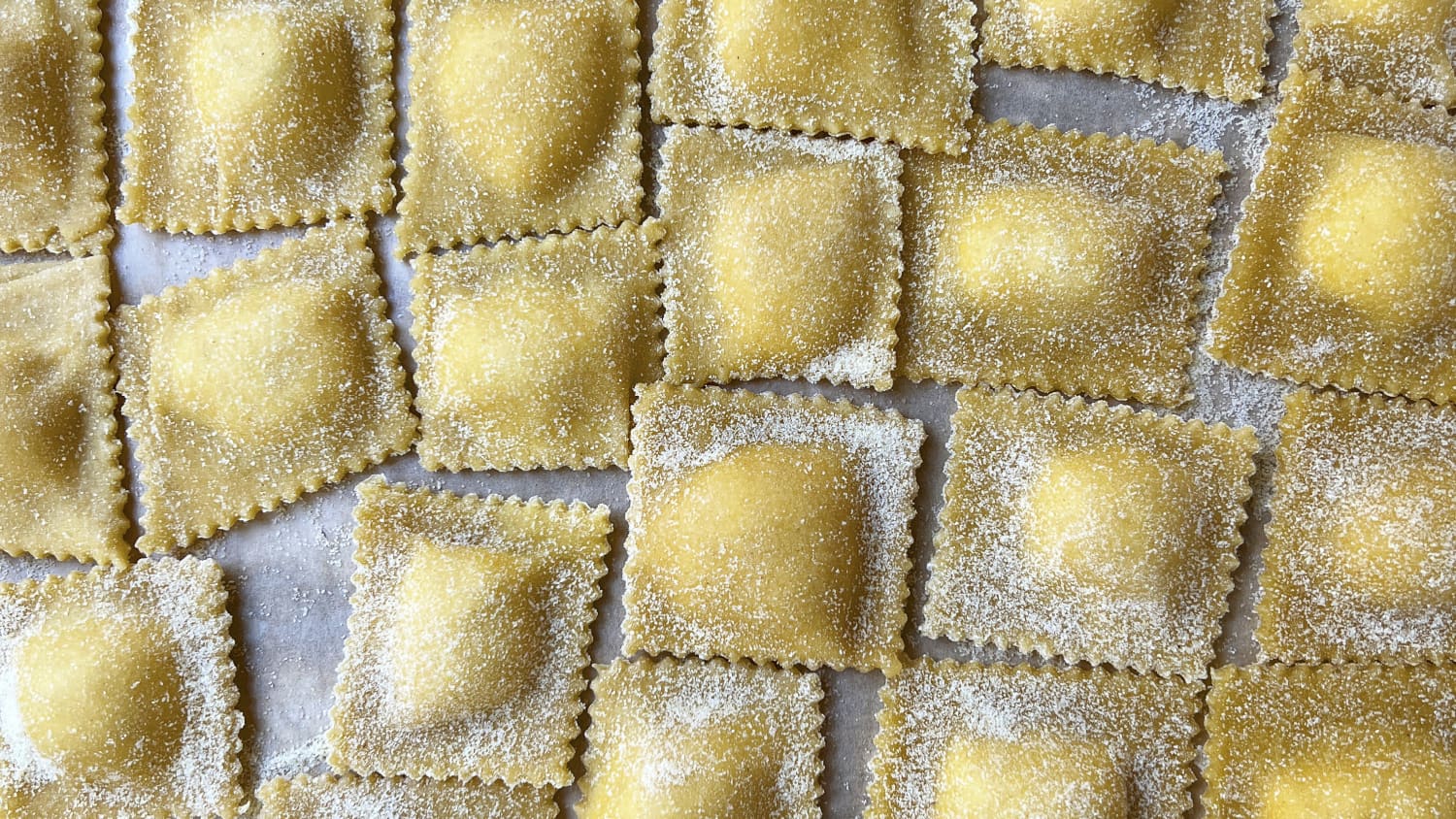
Ingredients
Export 10 ingredients for grocery delivery
Instructions
Step 1
Place 4 cups all-purpose or ‘00’ flour and 1 teaspoon kosher salt in the bowl of a stand mixer fitted with the dough hook attachment. (If you’d like to make the dough by hand, follow the directions here.) Mix on low speed for a few seconds to combine.
Step 2
Add 4 large eggs, 4 large egg yolks, and 2 tablespoons olive oil. Mix on medium-low speed until the dough starts to form a ball and pull away from the sides of the bowl, scraping down the sides of the bowl and the dough from the dough hook once or twice, about 5 minutes. If after 1 to 2 minutes your dough still looks crumbly and dry, gradually add up to 4 tablespoons of cold water, 1 tablespoon at a time, until it comes together.
Step 3
Dust a work surface lightly with all-purpose or ‘00’ flour. Scrape the dough onto the flour and knead until the dough is smoother, less sticky, and more elastic, 5 minutes. Wrap the dough tightly in plastic wrap and refrigerate for at least 20 minutes and up to 24 hours. If the dough is very cold, let it sit at room temperature for 20 minutes before rolling it out.
Step 4
Drain and cut 4 ounces fresh mozzarella cheese into small cubes; add to a food processor fitted with the blade attachment. Grate 1 ounce Pecorino Romano cheese and 1/2 ounce Parmesan cheese on the small holes of a box grater (1/4 cup each), and add to the food processor.
Step 5
Add 1 container ricotta cheese, 1/2 teaspoon kosher salt, and 1/8 teaspoon freshly grated nutmeg if desired. Process until smooth, scraping down the sides as needed, about 1 minute.
Step 6
Transfer the filling to a piping bag fitted with a wide, round tip. Alternatively, transfer the filling into a large resealable plastic bag and push into one bottom corner; cut the corner of the bag when you’re ready to fill the ravioli. Refrigerate the filling while you roll out the pasta dough.
Step 7
Unwrap the dough and cut into 3 pieces (about 12 ounces each). Rewrap 2 pieces of the dough in the plastic wrap to keep them from drying out.
Step 8
Roll out each piece of dough: Set a pasta roller to the thickest setting. Flatten the piece of dough into a thick disk between your hands, dusting with semolina flour if it feels sticky. Feed it through the pasta roller. Repeat once or twice. Fold this piece of dough into thirds, like a letter, and press it between your hands again.
Step 9
With the pasta roller still on the widest setting, feed the pasta crosswise (folded-side in first) between the rollers. Feed it through once or twice more, until smooth. If desired, repeat this folding step. This helps to strengthen the gluten in the flour, giving it a chewier texture when cooked.
Step 10
Begin changing the settings on the roller to roll the pasta thinner and thinner. Roll the pasta 2 or 3 times at each setting (no need to fold anymore), and don't skip settings (the pasta tends to snag and warp if you do). If the pasta gets too long to be manageable, lay it on a cutting board and cut it in half crosswise before you continue rolling.
Step 11
Roll the pasta as thin as you can get it, then sprinkle generously with semolina and lay flat on a parchment paper-lined baking sheet with sheets of parchment in between each pasta sheet. Repeat until all the dough is rolled out.
Step 12
Line a second baking sheet with parchment paper and sprinkle with semolina flour. Sprinkle a work surface with semolina flour and arrange a pasta sheet on top with a long side closer to you.
Step 13
If the pasta sheet is at least 4 inches wide from top to bottom, pipe 1 -teaspoon portions of the filling onto the bottom half of the pasta sheet about 1-inch apart. Gently brush a little water on the top half of the pasta sheet, then gently fold the top half over the bottom half.
Step 14
If the pasta sheet is less than 4 inches wide, pipe 1 -teaspoon portions of the filling down the center of the sheet about 1-inch apart. Gently brush a little water around the border of the sheet. Gently top with a second sheet of pasta.
Step 15
Use your fingers to press out any air bubbles and seal the dough all the way around each portion of filling. Using a pasta cutter or sharp knife, cut around each portion of filling to form individual raviolo. Don’t worry if they are not perfect — they will still taste great.
Step 16
Transfer the ravioli to the baking sheet and repeat filling all the pasta sheets. You can cut up any pasta scraps and cook them up for a snack. If you don’t plan to cook the ravioli right away, refrigerate uncovered for up to 4 hours. (See Recipe Notes for freezing instructions.)
Step 17
Bring a large pot of heavily salted water to a boil. Working in batches of about 20 ravioli, add the ravioli and cook until the pasta is cooked through and al dente, 4 to 5 minutes. Remove the ravioli with a large slotted spoon or spider and toss with desired sauce.
Top similar recipes
Curated for youYour folders
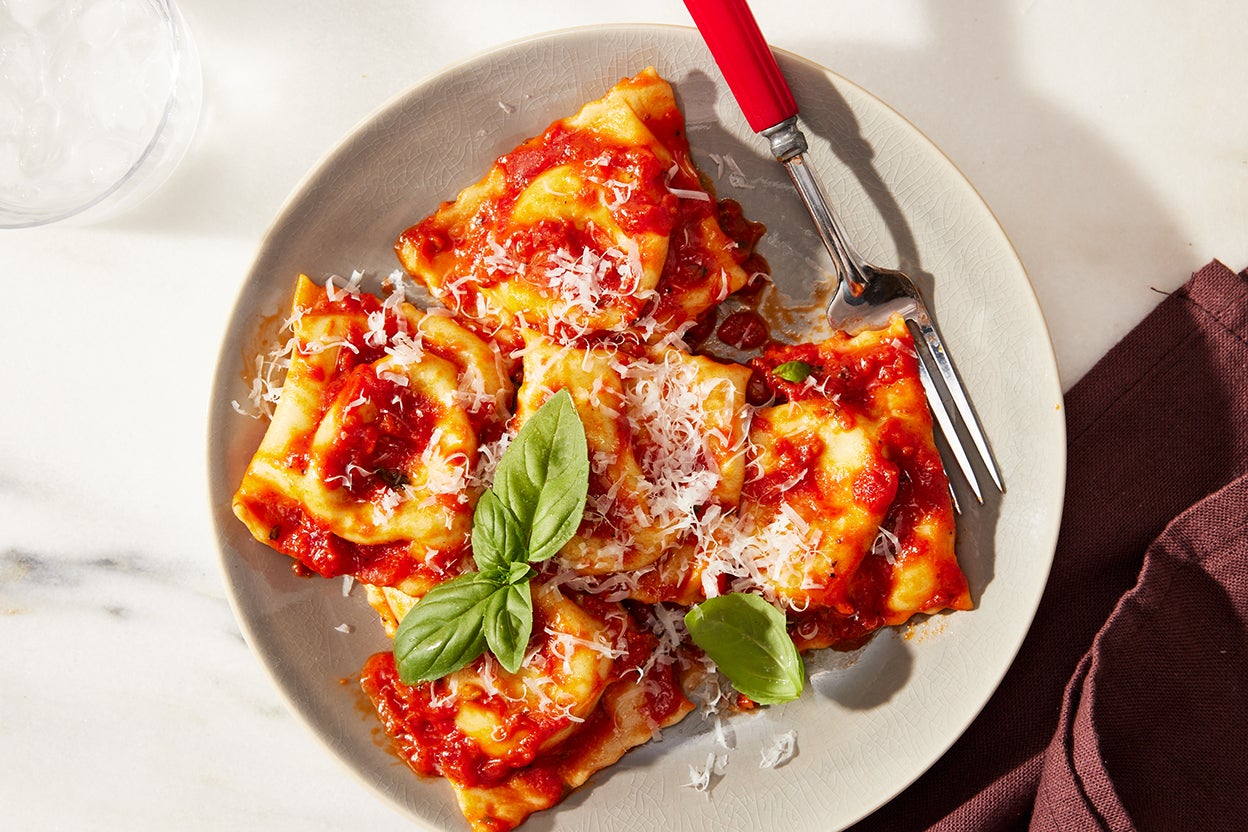
 257 views
257 viewsHomemade Cheese Ravioli
kingarthurbaking.com
8 minutes
Your folders
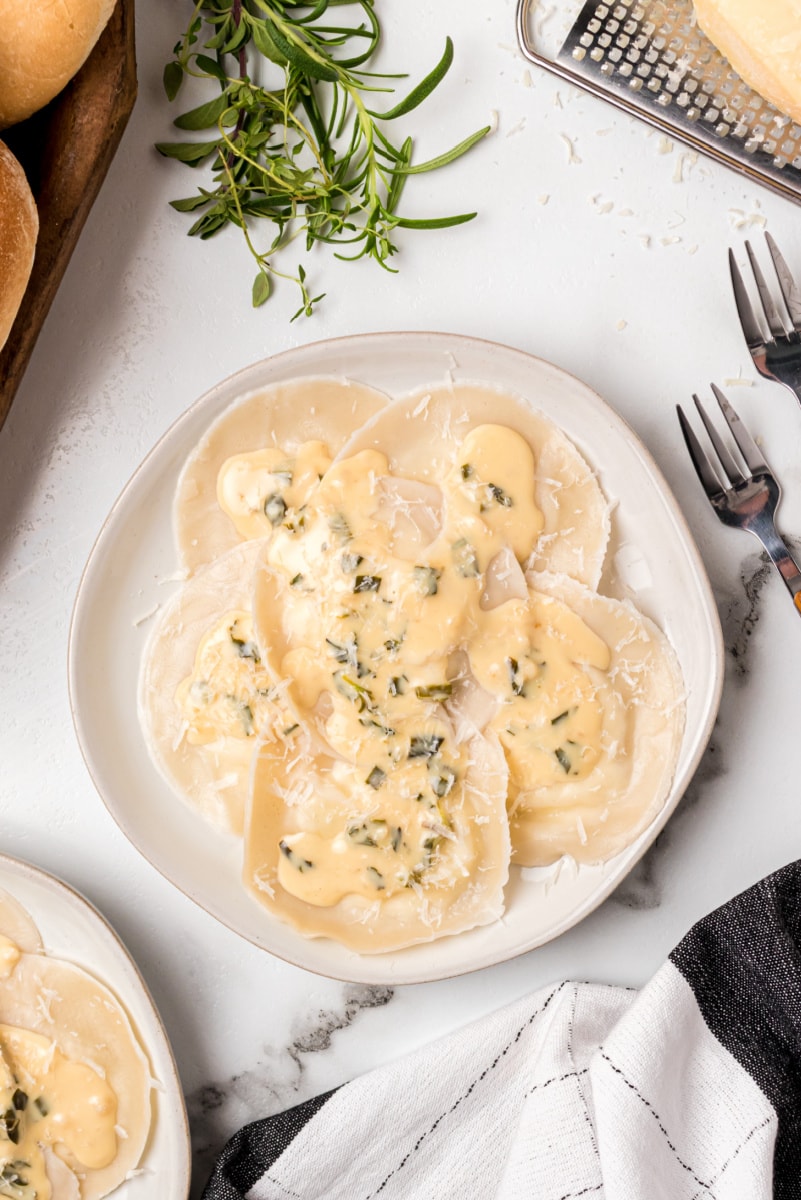
 220 views
220 viewsGoat Cheese Ravioli
recipegirl.com
4.7
(3)
35 minutes
Your folders

 234 views
234 viewsRavioli Recipe
laurainthekitchen.com
Your folders

 313 views
313 viewsHomemade Four Cheese Ravioli
allrecipes.com
4.3
(196)
15 minutes
Your folders
:max_bytes(150000):strip_icc()/20230804-SEA-ToastedRaviloli-RobbyLozano-003-e7bb43d20b734ff7bcc9a56a49a4840d.jpg)
 327 views
327 viewsCheese-Filled Toasted Ravioli
seriouseats.com
Your folders
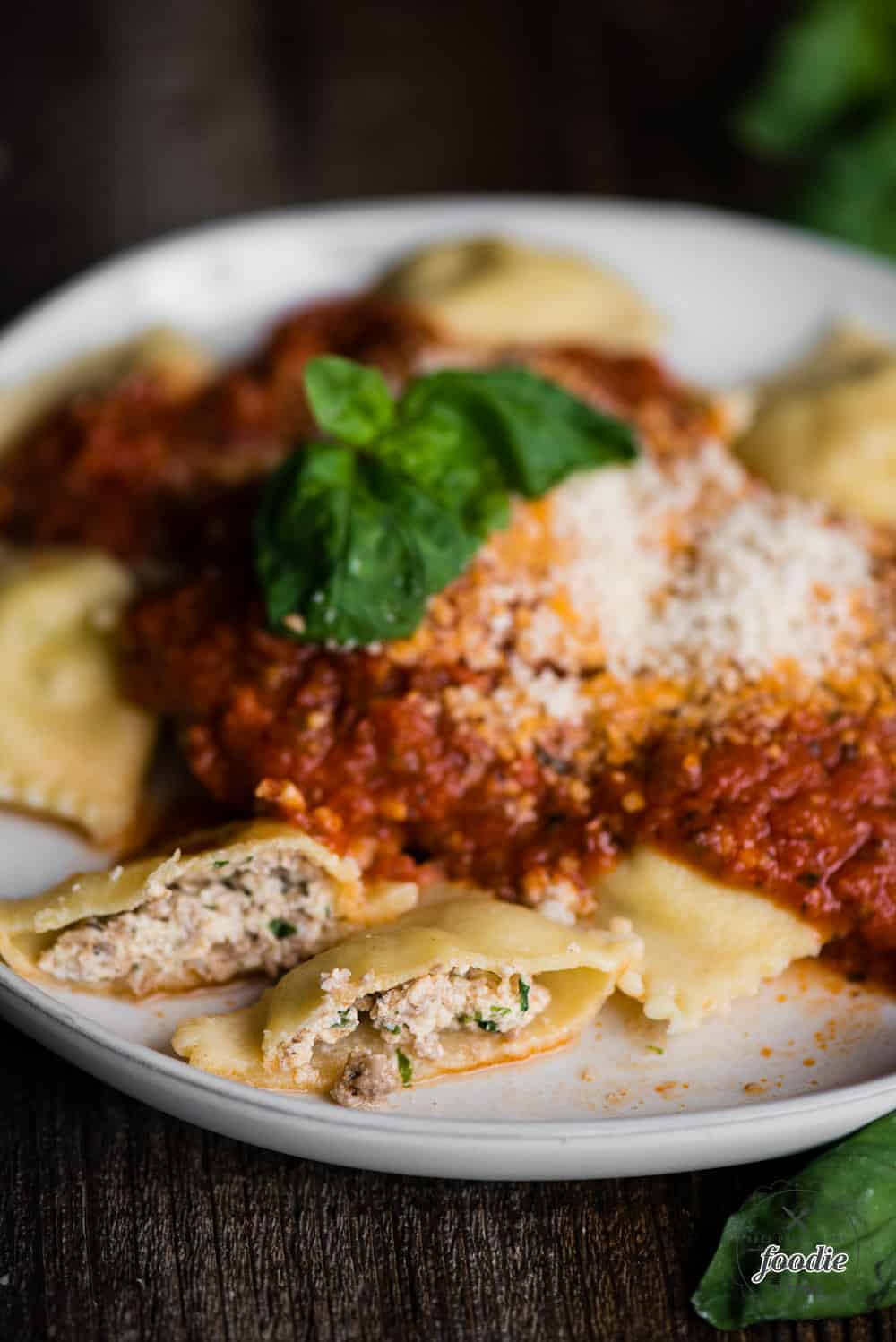
 413 views
413 viewsMeat and Cheese Ravioli
selfproclaimedfoodie.com
5.0
(8)
45 minutes
Your folders

 265 views
265 viewsHomemade Four Cheese Ravioli
allrecipes.com
Your folders

 372 views
372 viewsBeet & Goat Cheese Ravioli
lepetiteats.com
5.0
(1)
20 minutes
Your folders
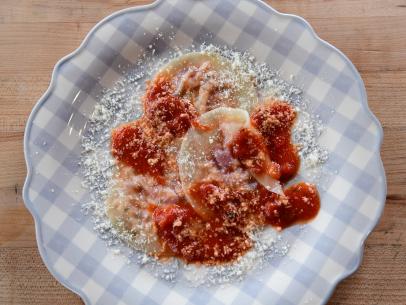
 234 views
234 viewsCheese Pizza Shortcut Ravioli
foodnetwork.com
40 minutes
Your folders
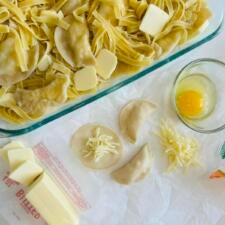
 59 views
59 viewsKelsones (Syrian Cheese Ravioli)
myjewishlearning.com
35 minutes
Your folders

 151 views
151 viewsBaked Ravioli Recipe
eatingonadime.com
5.0
(1)
60 minutes
Your folders

 182 views
182 viewsRavioli recipe | Epicurious.com
epicurious.com
Your folders
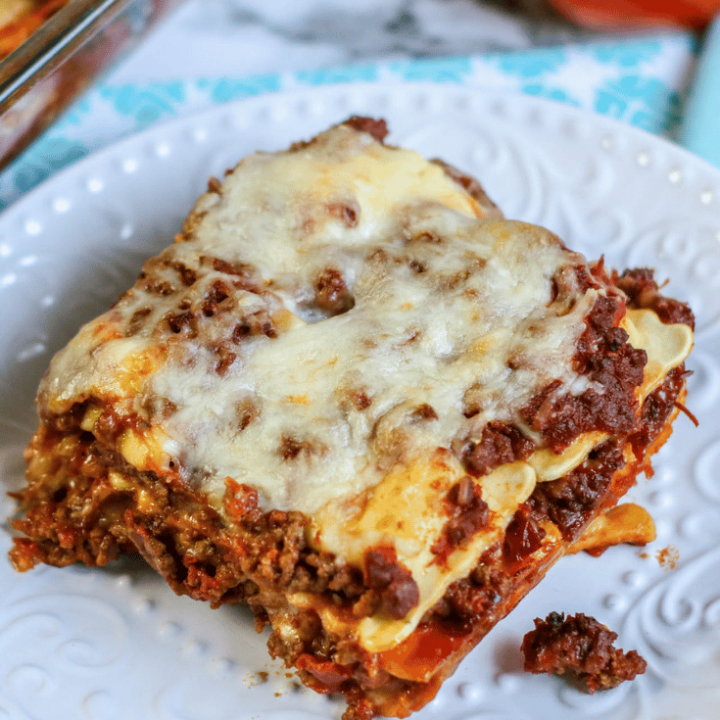
 175 views
175 viewsRavioli Casserole Recipe
lovinglivinglancaster.com
25 minutes
Your folders
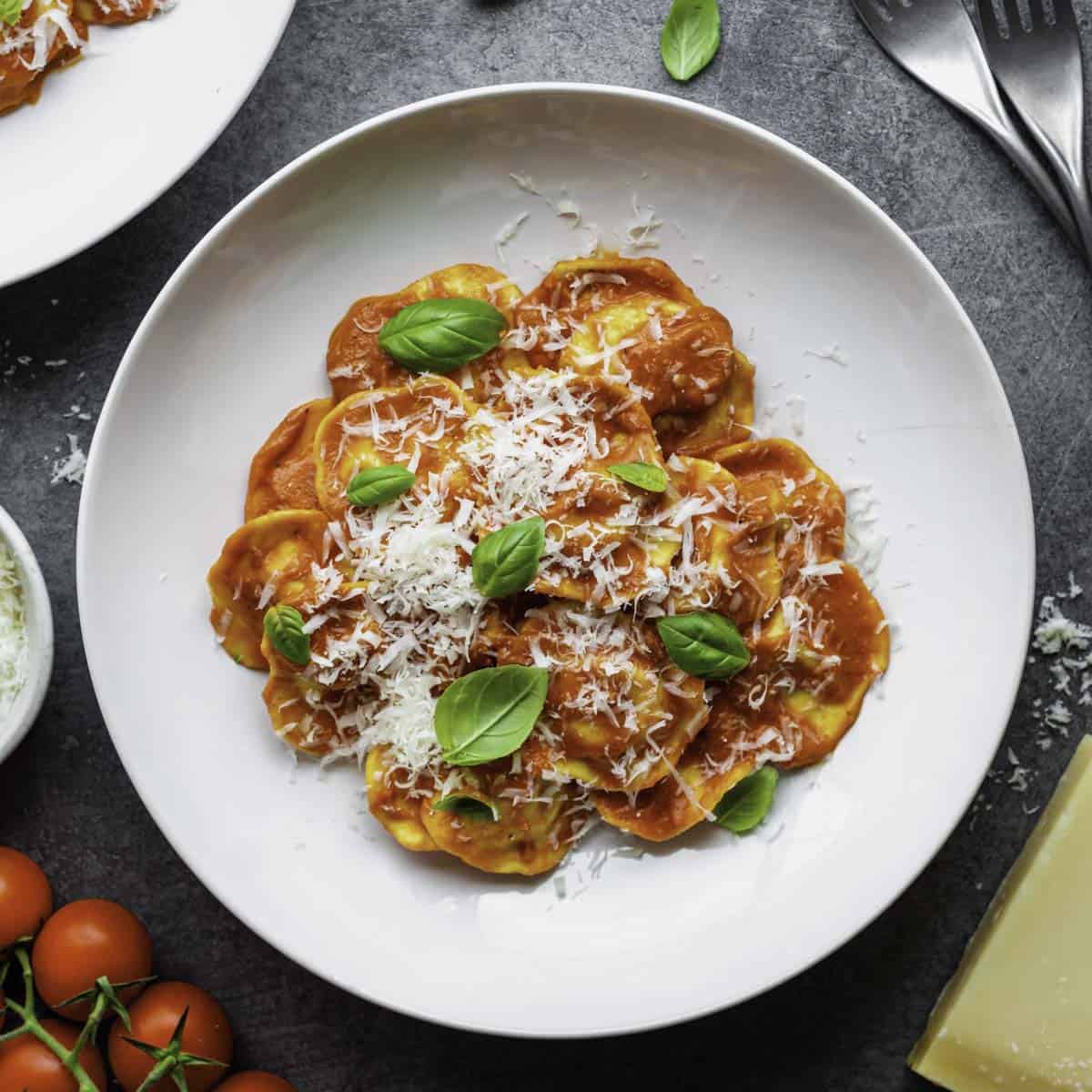
 176 views
176 viewsRavioli Pomodoro Recipe
sunglowkitchen.com
5.0
(2)
20 minutes
Your folders
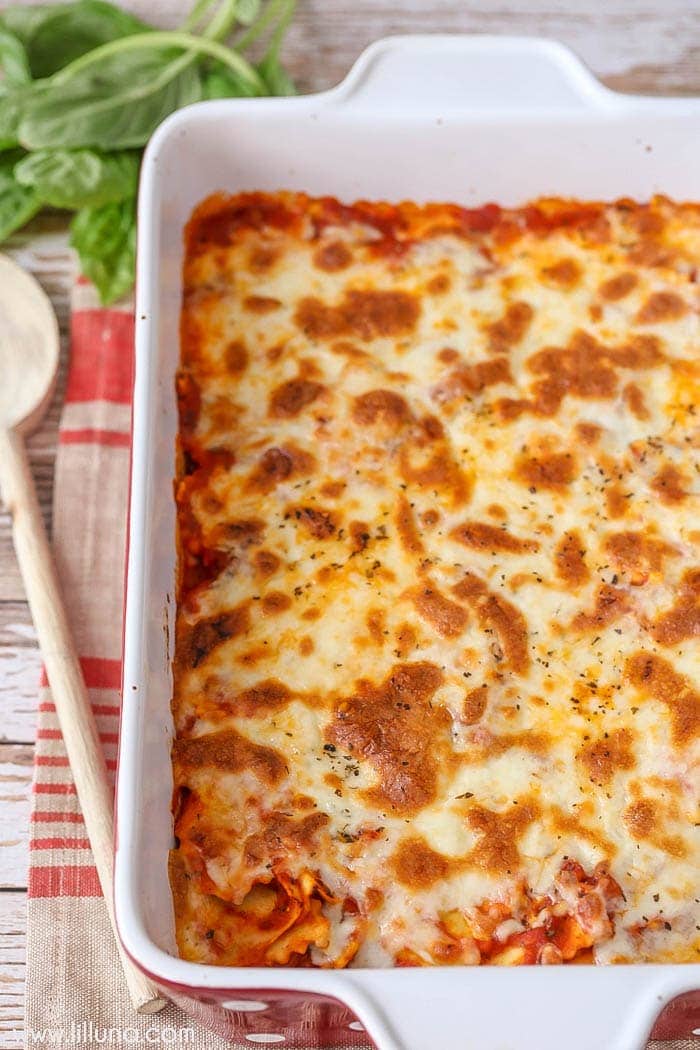
 117 views
117 viewsBaked Ravioli Recipe
lilluna.com
5.0
(44)
16 minutes
Your folders

 88 views
88 viewsRavioli Lasagna Recipe
momfoodie.com
5.0
(88)
35 minutes
Your folders

 94 views
94 viewsToasted Ravioli Recipe
smalltownwoman.com
5.0
(38)
10 minutes
Your folders

 247 views
247 viewsHam and goat's cheese ravioli
taste.com.au
3.0
(3)
5 minutes
Your folders

 121 views
121 viewsMushroom and goat’s cheese ravioli
womensweeklyfood.com.au
40 minutes